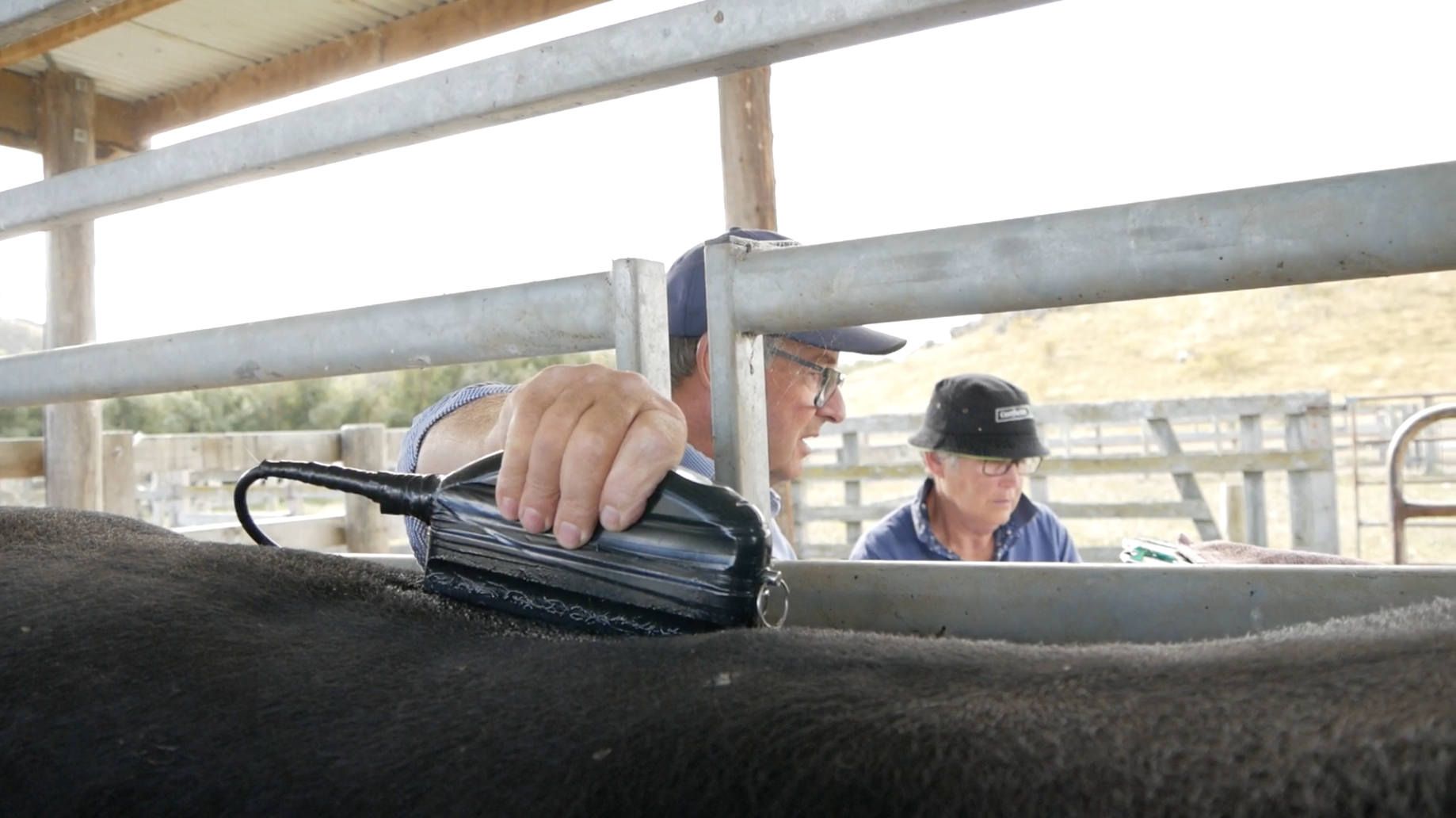How effective is ultrasound scanning at predicting marbling in beef?

The difference between a steak and a slab of leathery disappointment is culinary skills. The difference between a good steak and a life-affirming steak is genetics (management has a bit to do with it too). Intramuscular fat (IMF, or marbling) is a heritable ingredient in steak yumminess. You need to sprinkle some fat in amongst the fibres of your steak to hit the bullseye for flavour and texture. If you pair a well-marbled steak with someone who has mastered the use of fire, then you are in for a magnificent meal.
Beef breeders have made some good gains in improving marbling genetics. Selecting cattle that don’t have to be grossly fat on the outside before they start laying down the tasty, good stuff on the inside. Since you can’t have your breeding animal and slice it too, ultrasound is a handy tool for assessing intramuscular fat levels in living cattle.
The B+LNZ Genetics Beef Progeny Test has ultrasound scanned 4,500 cattle so far for carcase traits. Many of these animals have also been scored for marbling at slaughter. B+LNZ geneticists are happy to confirm there is a good correlation (0.73) between ultrasound IMF in living cattle and carcase marbling score. This means that 53% of the variation in marbling score was already captured in the ultrasound measure. Ultrasound IMF scores are a pretty good predictor of marbling, but there are limits in identifying animals with superior marbling when using ultrasound scans as a correlated predictor.
If you want to take your steaks to the next level, you can have confidence that the IMF EBVs calculated from ultrasound are taking you in the right direction. Providing more carcase data for genetic evaluations would help to put you on the trajectory even faster, giving consumers of our beef the ultimate culinary experience – a steak worth paying that bit extra for.
 Back
Back

